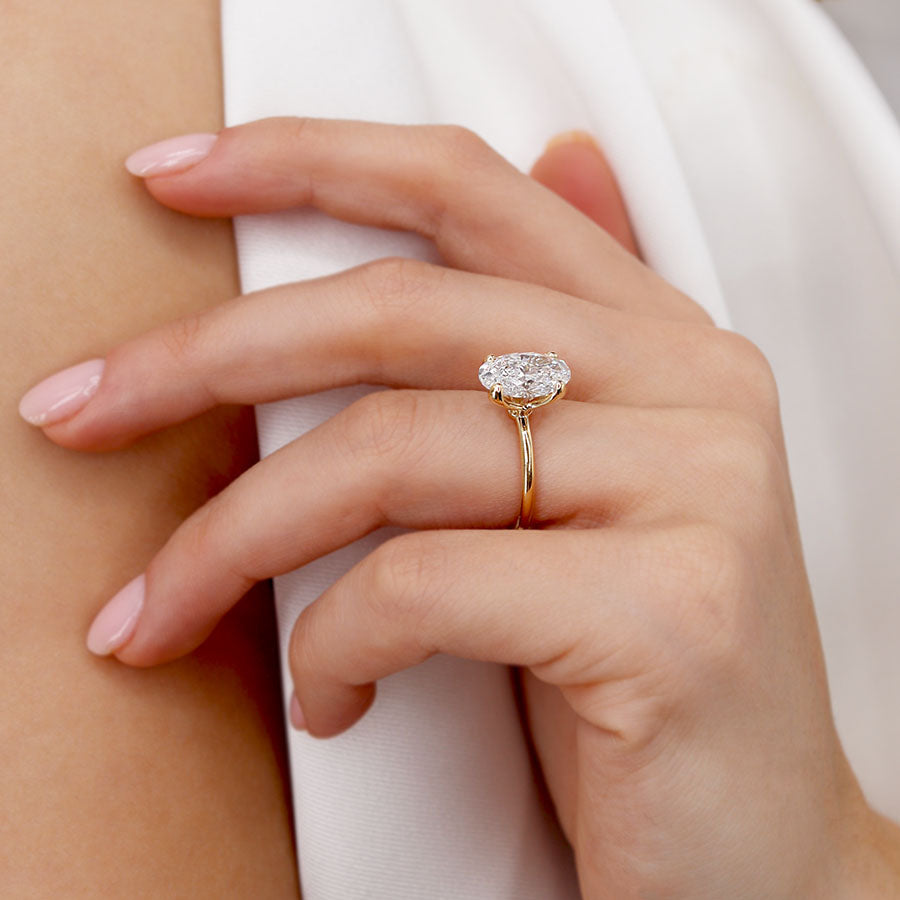Victorian engagement rings represent a unique blend of history, artistry, and romance, making them an enduring choice for couples today. The Victorian era, which spanned from 1837 to 1901 during Queen Victoria’s reign, was marked by a fascination with nature, symbolism, and craftsmanship. This period saw a variety of gemstones being used in engagement rings, each carrying its own meaning and allure. In this guide, we will explore the most popular gemstones featured in Victorian engagement rings and the significance they hold.

1. Diamonds: The Classic Choice
While diamonds have been a staple in engagement rings for centuries, their popularity soared during the Victorian era. Often referred to as the “king of gemstones,” diamonds symbolize love, strength, and eternity. Victorian engagement rings frequently featured diamonds in various cuts, including old mine cuts, rose cuts, and cushion cuts. The romantic allure of diamonds is further enhanced by their ability to reflect light, making them a timeless choice for those seeking a classic engagement ring.
2. Emeralds: The Stone of Renewal
Emeralds were favored during the Victorian era for their rich green color, symbolizing rebirth, fertility, and growth. Often associated with the goddess Venus, emeralds are thought to represent love and harmony in relationships. Victorian engagement rings adorned with emeralds were typically set alongside diamonds, creating a striking contrast that highlighted the beauty of both stones. Their rarity and vivid hue make emeralds an excellent choice for those who want a unique engagement ring with historical significance.
3. Sapphires: The Gem of Wisdom
Sapphires, with their deep blue hues, were highly sought after during the Victorian era. These gemstones symbolize wisdom, loyalty, and nobility, making them an ideal choice for engagement rings. The popularity of sapphires was further solidified by their royal associations; Queen Victoria herself was known to favor sapphires in her jewelry collection. Victorian engagement rings often featured sapphires surrounded by diamonds, creating an eye-catching design that remains popular today.
4. Rubies: The Stone of Passion
Rubies, with their striking red color, were emblematic of passion and love during the Victorian era. This gemstone, often referred to as the “king of precious stones,” symbolizes desire and vitality, making it a fitting choice for engagement rings. The vibrant hue of rubies allowed for bold designs, with many Victorian rings featuring intricate settings and unique designs. Rubies are often paired with diamonds for added brilliance, resulting in an engagement ring that exudes romance and elegance.
5. Pearls: The Symbol of Purity
While pearls may not be traditional engagement stones, they gained popularity in Victorian jewelry. Pearls symbolize purity, innocence, and beauty, making them a suitable choice for engagement rings, especially for those seeking a more understated option. Victorian engagement rings featuring pearls often combined them with gemstones like diamonds or sapphires, creating a delicate and timeless piece. The lustrous sheen of pearls adds a unique touch to any engagement ring, appealing to those with a more vintage aesthetic.
6. Amethysts: The Stone of Protection
Amethysts were favored in Victorian jewelry for their enchanting purple hue and believed protective properties. Symbolizing peace and tranquility, amethysts were often thought to safeguard relationships. Victorian engagement rings featuring amethysts were often set in intricate designs, showcasing the craftsmanship of the era. This gemstone is perfect for couples seeking a distinctive engagement ring that reflects both beauty and meaning.
Conclusion
Victorian engagement rings offer a beautiful array of gemstones, each with its own symbolism and allure. From the classic elegance of diamonds to the unique charm of emeralds, sapphires, rubies, pearls, and amethysts, there is a gemstone for every couple’s love story. When choosing an engagement ring, consider the significance of each gemstone and how it resonates with your relationship. Ultimately, a Victorian engagement ring is not just a piece of jewelry; it’s a timeless symbol of love, commitment, and the rich history that comes with it.